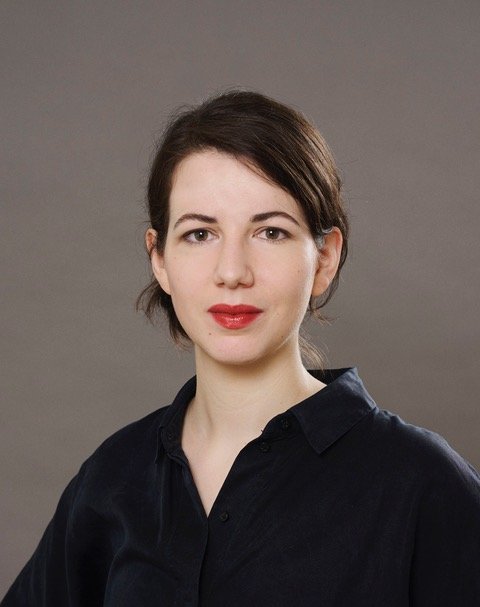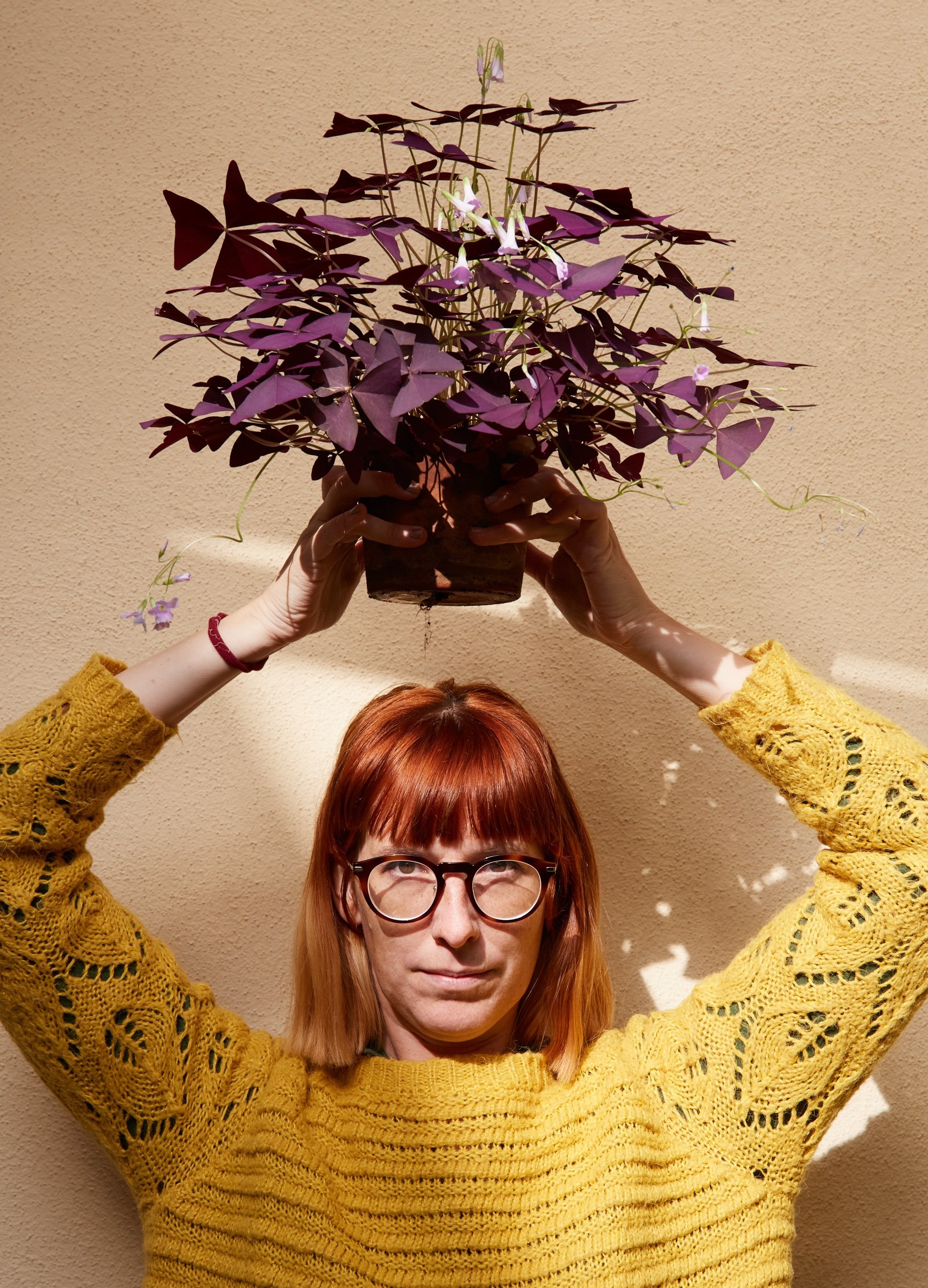Have We Outgrown Women-Only Spaces in Film?
The film world, like the real world, is an unequal place. Like any unequal place in a patriarchal society, it’s women and gender nonconforming people who are often set to lose out in the face of inequality.
Written by Jess Sweetman
From “Me Too” to the casting couch, from income inequality to the impact of long working hours. From the lack of basic support for parents in the workplace - spaces to pump, time with their kids, to lack of provision for pregnant people to be comfortable and safe on set, inequality is embedded into the professional workspace in the film world.
And then we have the cultural stuff - the oppressive and impossible-to-reach beauty standards dictating how female bodies should look, there’s rape culture fuelled by the male gaze, the continuing lack of women’s stories being told authentically, and the missing women and gender nonconforming directors and crew members across the largest filmmaking economies in Hollywood, Europe, China, and India, (although Nigeria’s Nollywood could be argued to be bucking that trend.)
And it’s not just directors who are still repetitively male, according to Lise Perotett from Le Lab, a French organisation who publish reports on gender equality in cinema, at the European level, they counted just 9% of film composers being women, which is the same percentage of women astronauts in France. Oh and for all of these roles - it’s pretty likely that women are still being paid less to do the same jobs as men.
It is against this backdrop that an ecosystem has grown to support female and nonbinary filmmakers to make their films, and to provide spaces to show their work and be they horror films, films made by women over fifty, film festivals showing the work of women continue to successfully run around the world.
What’s more, in the short film world, where gender parity is much nearer in directors who are making and showing films, this year’s Clermont-Ferrand Short Film Festival dedicated two of its Panorama screenings to films made by and about women.
So are these places still necessary? Are programmes specifically screening the work of female filmmakers antiquated or important? And do we need dedicated programmes to focus on women’s stories? I reached out to a mix of female filmmakers, festival organisers, and others in the industry to see what they think.
First off, I spoke to the organiser of the Clermont-Ferrand Short Film Market, Julie Rousson about the reasoning behind the 2024 programming decision to put the work and stories of women front and centre at this year’s festival:
julie rousson: clermont-ferrand international short film festival
“as we know, female directors are often less programmed, less awarded in festivals, and less funded by public institutions, even though they represent more than 40% of the submissions received by our festival and over half of the students in film schools.
choosing a program entirely curated by women may seem surprising, but our industry has not acknowledged that, for a long time, some programs were almost exclusively male.”
When I ask about the programming slant at Clermont, favouring stories about women, Rousson responds:
“We wanted to emphasise female empowerment because we sense a real awareness, a genuine desire to showcase women's portraits in all their complexity and strength in short film production.
The Me Too movement has liberated discourse on many subjects, and we also wanted to show how women reclaim power. The short film format is always a very contemporary witness to the world we live in, so these themes have been present for several years, and it is also the preferred space for writing female characters away from the clichés sometimes conveyed by feature films or other audiovisual formats. But we also find older films that, placed in their historical context, were already testimonies and sharp observations of women's roles in society at the time.”
jenn brown: st john’s international women’s film festival
St. John’s International Women’s Film Festival (SJIWFF) is Canada's longest-running women's film festival and one of the longest-running globally. Executive Director Jenn Brown speaks passionately about the need for communities such as hers:
“SJIWFF came of age long before the industry started to shift its focus, but our work is far from done. While festivals and funders are introducing measures towards gender parity, we are far from reaching 50/50 quotas.
the latest women in view on screen report shows a decrease overall in progress for women and gender-diverse creatives; indigenous, black, and women of colour were the most significantly impacted and underrepresented.
the results of an international study, "re-framing the picture", presented this febru
ary at berlinale, looked at the impact of gender equity policies in the film industries in the uk, canada, and germany. it found that if canada keeps going at its current pace, we have nearly 200 years before reaching gender equity. so, we'll need women's film festivals like ours for a long while yet.”
Photo by Alex Stead
rimante daugelaite: managing director of lithuanian shorts / baltic women in film mentorship
Rimante Daugelaite is the Managing Director of Lithuanian Shorts, and represents the Baltic Women in Film Mentorship - a programme where women in the film industry from Baltic countries can be partnered with more experienced women in the industry. When asked about the importance of women-only spaces in the film industry she says:
“I strongly believe in the importance of creating communities for women where they can feel safe, while also gaining confidence and inspiration from each other through relatable experiences. I believe in the collaborative nature of change, and that women-only programs can lead to enormous transformations, both personally and professionally.”
Photo (c) Marija Mireckaite
lotte kircher: short film industry consultant and moderator
And according to Lotte Kircher, a consultant to the short film industry and moderator of numerous panels on this very subject, should we have women-only spaces for films made for and by women?
“We are navigating in a space that was created mostly by men and even though there has been an increase of (leading) women in our short film industry, its social rules are still shaped by a male point of view. I am sure it is not with ill intent. It’s just how it is. There were many times when I experienced frustration because my opinions were not being heard. The focus of the recipients would often lie on the delivery (too short, too direct, too emotional, irrelevant (my favourite)), not the input.
The short film industry is a starting point for many young talents. By holding events that are created for women by women, we are offering a meeting point where they can gather, share and learn to navigate in a safer space. For now, I think that it is crucial to create those opportunities by hosting events catered specifically for women. And when things get better, they will be a great way to hang out with a bunch of cool women from our industry.”
edel brosnan: european women’s audiovisual network
Edel Brosnan, another panelist and Strategy Lead for the European Women’s Audiovisual Network, admits that she would prefer the reality to be a little different:
“I strongly sympathise with the counter arguments - the work should speak for itself, and many women do not like being pigeon-holed as women artists, filmmakers, storytellers, etc,” she says, “however, we are where we are and for now, I think spaces for women and gender nonconforming filmmakers are an important part of the ecosystem.”
“longer term, i'd like to see festival programmers, curators, distributors and sales agents selecting more work by women, not because they feel they 'should' but because they recognise the artistic worth of work by women and recognise that there is a healthy, currently under-served audience for these films.”
And within the genre world? The horror space is another where female-led exhibition spaces seem to be thriving within supportive communities (to be clear - I see this from within, a part of the team at Final Girls Berlin Film Festival - so I’m definitely biased!)
sapna moti bhavnani: wench film festival
One such film festival, Wench Film Festival is a fest for horror and other genre films which takes place in Mumbai, India, focussing on the work of women and non-binary filmmakers. I reached out to their Founder - Sapna Moti Bhavnani to find out why they find the safe space they have created to be necessary:
“In an ideal world we should not have festivals solely based on gender, sexuality or ethnicity or anything except for the genre of films they screen... to me- fully inclusive means to embrace everyone without having to spell it out but unfortunately we are in a world where there are still spaces where we need to do that. India is definitely one of those countries.
In a cinematic realm often dominated by male perspectives, the significance of woman-led horror films in India cannot be overstated. Wench Film Festival not only amplifies the diverse voices and visions of female filmmakers but also challenges traditional narratives that have historically marginalised women in the horror genre.
“By fostering an environment where women take the lead, it opens avenues for unique and powerful storytelling, redefining the landscape of horror cinema. the festival serves as a crucial space for empowerment, celebrating the creativity and fearlessness of women in an industry that has, for far too long, underestimated their contribution.”
“it's not just about showcasing films; it's about breaking barriers, rewriting norms, and paving the way for a more inclusive and equitable future in the world of horror filmmaking.”
And what of the filmmakers? While Clermont-Ferrand is a major platform, screening work specifically by women, how does it feel to have your work recognised as part of your gender?
I spoke to some of the directors whose work screened as part of the aforementioned programme at Clermont-Ferrand. I was curious to find out if the women whose films were being screened saw a need for women-centric spaces within festival programming:
carol freeman: filmmaker
Carol Freeman, whose award-winning glass-painted animation “The Bird and the Whale” screened as part of the programme says:
“I think there's definitely still a need for women-only programmes, mainly because women are still hugely underrepresented behind the camera in the film industry…It's always been really beneficial to me meeting other like-minded creatives for future collaborations and to share advice and support over the years.”
Freeman’s animation, made by painting each frame on glass, shooting, and then wiping away to create the next shot, was made by a majority-female crew. Freeman continues:
“it's also important for festival audiences to experience creative work from a female perspective and aesthetic, seeing films they might not typically be exposed to. but also for audiences to see women and non-binary creatives being successful behind the camera - if you can see it you can be it.”
réka bucsi: filmmaker
Hungarian filmmaker Réka Bucsi, whose Oscar-shortlisted graduation film, the animation “Symphony No. 42” played as part of Clermont’s programme, agrees:
“I believe that all women would rather be recognized alongside their fellow filmmakers without regard to gender.” However - “Despite increased attention to women's roles in film over recent years, the disparity between the number of female and male filmmakers continues to be significant. Men predominantly occupy creative roles within the film industry, whereas women are more often found in production management than in writing or directing positions.”
Réka, continues with an insight into the situation from the perspective of a Hungarian filmmaker:
Photo (c) Heinrich Völkel
“The allocation of funds by European national film institutions is predominantly influenced by male decision-makers. Notably, in Hungary, a woman has never been part of the committee deciding on film funding. Furthermore, in the 120-year history of Hungarian animation, there has never been a female director who has solely directed an animated feature film. These are realities that undeniably shape the nature of films financed by Hungarian national funds.
“although quotas might seem like a contrived method of ensuring women's representation, i believe they are necessary to begin correcting this imbalance, even if only marginally.”
emilie pigeard: filmmaker
Emilie Pigeard, Director of the two-time César Award and one-time European Film Award winner: “BABIČINO SEKSUALNO ŽIVLJENJE (GRANNY'S SEXUAL LIFE)” a short animation exploring taboos around female sexuality:
"The film industry has long been marked by gender disparities, with women often under-represented both on screen and behind the scenes. More diversity in gender can help address this inequality by providing a platform specifically for female filmmakers to showcase their work.
By highlighting the work of women filmmakers in dedicated exhibition spaces or programs, women's voices and perspectives can receive greater visibility and recognition. This can contribute to a more diverse and inclusive film landscape that reflects the experiences and stories of women.
“And finally, the more we have a supportive environment, the more we’ll have female filmmakers who can network, collaborate, and mentor one another. These spaces can offer a sense of community and solidarity, which can be empowering for women in an industry.”
“women-only exhibition spaces/programmes can be perceived as exclusionary for others and stigmatising for women. it’s not a perfect solution, but unfortunately it is the only one we have right now to equilibrate the balance. hopefully it will not be necessary in the future!"
corina schwingruber ilic: filmmaker
Swiss filmmaker CORINA SCHWINGRUBER ILIĆ, whose 2018 short “All Inclusive” was included in the Panorama screening at Clermont-Ferrand says:
“Every highlight on female filmmaking helps women to be recognized in the film world. And it helps those women who are unsure about taking the path as filmmakers to assert themselves in the film world.
It always helped me a lot to see strong films by strong women and to have them as role models. In addition to the female film programs, it would be important to have more programs in the industry where women in the film industry are highlighted.
film production and film events in general (above all the festivals) should be more family-friendly, so that women don't disappear after giving birth and never reappear.”
Photo (c) Sara Furrer 2023.
In conclusion - I’m yet to meet a woman in the industry who doesn’t view the importance of spaces designed to show stories by and for women and gender nonconforming people and for the time being, I’m happy to support what we have until the rest of the industry is ready to catch up.
And such places not only exist, but are often wonderful places where people from across the gender spectrum can enjoy great movies and mix and mingle in peace, which isn’t too bad if you think about it.
And if you wish for a little more light in your reading of Women’s History - maybe grab a ticket for a female-helmed movie or go to your nearest women’s film festival and perhaps things might start speeding up for the better. You never know, eh?













